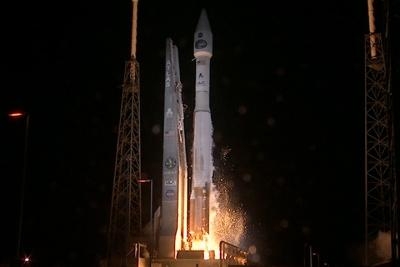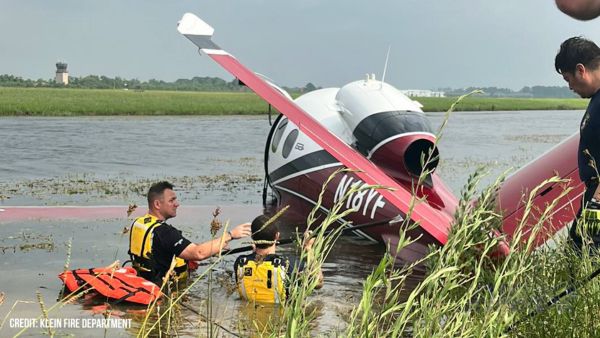Fri, Feb 01, 2013
Two Additional TDRS Spacecraft To Be Placed In Orbit Over The Next Two Years
The first of NASA's three next-generation Tracking and Data Relay Satellites (TDRS), known as TDRS-K, launched at 8:48 p.m. EST Wednesday from Cape Canaveral Air Force Station in Florida. "TDRS-K bolsters our network of satellites that provides essential communications to support space exploration," said Badri Younes, deputy associate administrator for Space Communications and Navigation at NASA Headquarters in Washington. "It will improve the overall health and longevity of our system."

The TDRS system provides tracking, telemetry, command and high-bandwidth data return services for numerous science and human exploration missions orbiting Earth. These include the International Space Station and NASA's Hubble Space Telescope. "With this launch, NASA has begun the replenishment of our aging space network," said Jeffrey Gramling, TDRS project manager. "This addition to our current fleet of seven will provide even greater capabilities to a network that has become key to enabling many of NASA's scientific discoveries."
TDRS-K was lifted into orbit aboard a United Launch Alliance Atlas V rocket from Space Launch Complex-41. After a three-month test phase, NASA will accept the spacecraft for additional evaluation before putting the satellite into service.
The TDRS-K spacecraft includes several modifications from older satellites in the TDRS system, including redesigned telecommunications payload electronics and a high-performance solar panel designed for more spacecraft power to meet growing S-band requirements. Another significant design change, the return to ground-based processing of data, will allow the system to service more customers with evolving communication requirements. The next TDRS spacecraft, TDRS-L, is scheduled for launch in 2014. TDRS-M's manufacturing process will be completed in 2015.
(Image provided by NASA)
More News
“Warbirds in Review features veterans, aviation legends, and aircraft that simply cannot be seen together in one place anywhere else in the world. Many of these veterans main>[...]
Also: VAI v Anti-Heli Actions, Electric Aircraft Symposium, 2024 FAA Drone/AAM Symposium, Gravitymaster Blue Origin's seventh passenger flight ended with a smidgeon of drama when o>[...]
“The importance of this YF-16 paint scheme is celebrating 50 years of the F-16 Viper. Everyone at Edwards has a big sense of pride for not only supporting the Viper Demo Team>[...]
Aero Linx: National Aeronca Association We are dedicated to supporting the design and preserving the history of Aeronca aircraft. Founded by Jim Thompson and fostered by his leader>[...]
Klyde Sounds Like He's Defining An 'Influencer' FMI: www.klydemorris.com>[...]
 Aero-News: Quote of the Day (05.25.24)
Aero-News: Quote of the Day (05.25.24) Airborne 05.22.24: NS-25 Chute Failure, #HonorTheWASP, SkyCourier 'Combi'
Airborne 05.22.24: NS-25 Chute Failure, #HonorTheWASP, SkyCourier 'Combi' Aero-News: Quote of the Day (05.26.24)
Aero-News: Quote of the Day (05.26.24) ANN's Daily Aero-Linx (05.26.24)
ANN's Daily Aero-Linx (05.26.24) Klyde Morris (05.24.24)
Klyde Morris (05.24.24)



